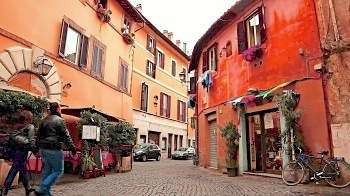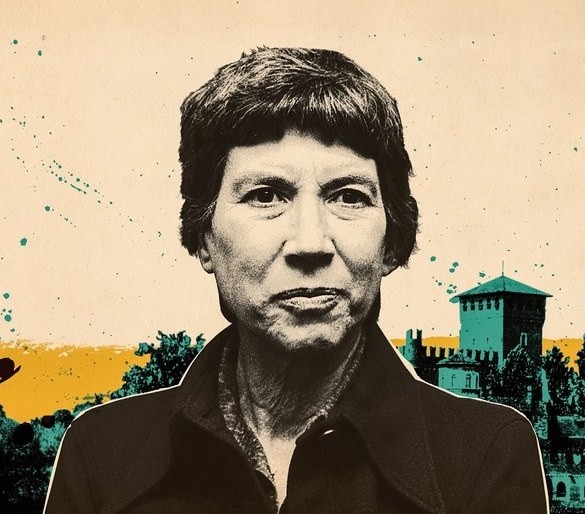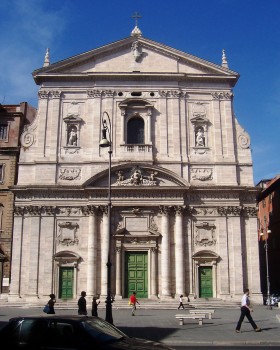“Your father certainly didn’t teach you anything, having gotten it into his head that you were born knowing everything. No one brought you up. And you turned out pretty oblivious. Though I’m not sure you would have been less oblivious if you’d had a better upbringing. Your sisters are maybe less oblivious than you are but they’re peculiar too and oblivious, one of them in one respect and the other in another. I didn’t teach them anything. Or maybe I taught them something but it was the wrong thing, because sometimes I feel like a person I don’t like very much.” Adriana, mother of Michele, in a letter to him.
 Originally published in Italy in 1973, under the title Caro Michele (Dear Michele), Natalia Ginzburg’s most popular Italian novel changed its title for an English-speaking audience in this new edition. Happiness, as Such, the English title, conveys the author’s purpose, emphasizing the uncertainties of knowing exactly what happiness is on a grand scale, the major point of this novel, and applies to a broader cast of characters than just “dear” Michele, the “oblivious” son of a forty-three-year-old mother whose life is a melding of strange experiences with uncertain goals and values. Told through a series of letters, primarily between Adriana, the mother, and twenty-one-year-old Michele, her son, the letters reveal the often interconnected stories of several other characters – family, friends, and lovers, past and present – as they go about living and describing their daily lives. Author Ginzburg, whose style is so unpretentious and seemingly spontaneous that a reader cannot help but become involved in the various narratives, gradually shows how each person protects his/her happiness by doing whatever seems right at the time in order to escape misery, unpleasant consequences, and time-consuming self-analysis. As she reveals her characters, author Ginzburg herself begins to come alive, a person of ironic humor, witty insights, and immense sensitivity to hidden meanings as revealed in seemingly ordinary dialogue.
Originally published in Italy in 1973, under the title Caro Michele (Dear Michele), Natalia Ginzburg’s most popular Italian novel changed its title for an English-speaking audience in this new edition. Happiness, as Such, the English title, conveys the author’s purpose, emphasizing the uncertainties of knowing exactly what happiness is on a grand scale, the major point of this novel, and applies to a broader cast of characters than just “dear” Michele, the “oblivious” son of a forty-three-year-old mother whose life is a melding of strange experiences with uncertain goals and values. Told through a series of letters, primarily between Adriana, the mother, and twenty-one-year-old Michele, her son, the letters reveal the often interconnected stories of several other characters – family, friends, and lovers, past and present – as they go about living and describing their daily lives. Author Ginzburg, whose style is so unpretentious and seemingly spontaneous that a reader cannot help but become involved in the various narratives, gradually shows how each person protects his/her happiness by doing whatever seems right at the time in order to escape misery, unpleasant consequences, and time-consuming self-analysis. As she reveals her characters, author Ginzburg herself begins to come alive, a person of ironic humor, witty insights, and immense sensitivity to hidden meanings as revealed in seemingly ordinary dialogue.
Adriana, who controls the narrative, is the divorced mother of five, Michele and his four sisters. His sister Angelica, who also plays an important role in the exchange of letters, is married, with a child. Sister Viola, also married, runs her own household, and the fourteen-year-old twins are still in school. When the mother Adriana and her husband, an artist, ended their marriage several years ago, Michele, who also had visions of being an artist, went to live with his father, while the girls stayed with their mother. Adriana has always blamed this separation for the fact that Michele is a mystery to her: “I think about how superficially we pass judgment on each other. I think you’re a moron,” she tells him. “But I don’t know if you’re a moron. Maybe you’re secretly wise.” Since Adriana is the primary point of view, the reader, too, is often unclear about who Michele actually is, and as the hidden stories are revealed among the characters, Michele’s personal story becomes a major issue for the entire family. When he moves suddenly from Rome to London without telling his mother, saying only that he planned to study sculpting there, his mother wants to know what, or whom, he is running away from. He does not return for the funeral of his father, a few days later, and then, just as suddenly, moves from London to Leeds, where he marries an American divorcee whom he has just met a few days earlier.

When Mara is riding with Osvaldo and his daughter, they stop at the house in Trastevere where his wife and the family live. Mara’s comment is that she dislikes the red color.
As needy as Michele has been in Rome, his long-distance neediness is even greater, and the family seems to continue enabling it. He asks his sister Angelica to get all the documents that he will need to get married, just as she earlier helped him out by disposing of a gun he says he had been hiding for a friend in his apartment in Rome. He continues to borrow money from his family. Nonchalant references to a “group” he belongs to, and even a possible fascist spy in the group, float through the narrative and give a sense of secret activities in Rome. Michele also writes to Angelica asking her to find a place for one of his friends to stay in Rome, and then asks her to call on Mara Castorelli, a major character in this novel, to whom he earlier gave money for an abortion that she never had, and who now has a twenty-two day-old baby which might be his.
Mara proves to be one of the most vibrant – and selfish – characters in the narrative. Like Michele, Mara depends on others for money, places to stay, and food, and is flexible about whom she “loves.” She has even left her baby with a friend so she can work in an interesting job, though the baby is only three weeks old. In a letter she assures Michele that they had fun together and that she didn’t want anything from him, though she casually bemoans the fact that “You really hurt my feelings that one time that you arrived late for our date, and you were out of breath and pale. You told me you’d run over [someone]. Later…you told me she was dead.” She confesses, in her self-absorbed way, “I don’t want to marry you because you hurt me that time and a lot of other times, too.” Totally lacking in perspective, she has already started thinking about marrying an important person she works with, one she calls “the pelican,” for whom she “does the great favor of living with him in his house and spending the money that he doesn’t need.” Neither she nor Michele believes in happiness, per se.

Tower on Isola del Giglio, like the one which Michele inherited from his father. Photo by Ramona Partelli.
Gradually, the reader comes to know several more characters as they search for happiness. The conclusion forces a sense of reality to intrude into the lives of these characters, though the degree to which they are able to process reality and still seek what they regard as happiness remains a question. Life goes on, and on, and on, for them and as their sense of happiness changes, almost day by day, their lack of absolute values and sense of commitment make every crisis a new experience. No sense of resolution seems to accompany the biggest events in the characters’ lives, primarily because none of them give much thought to where they are going and who they are. It is the moment that lives for them, and life seems to be a series of disconnected moments – some happy, some sad – over which they believe they have no control. Seizing the moment works, but these moments tend to be short because, as one character points out, memory is limited, with most people “moving forward without ever looking back.” Few others recognize that each moment has “extraordinary splendor” within, as they continue on in their perpetual search for “Happiness, as Such.”
ALSO by Natalia Ginzburg, THE DRY HEART (1947) and VOICES IN THE EVENING (1961)
Photos. The author’s photo is an illustration by Cristiana Couceiro; photograph by Vittoriano Rastelli. https://www.newyorker.com/
The Piazza in Trastevere includes this red house, for which Mara expressed her dislike to the family which lived there. https://www.videoblocks.com/
Angelica lived near the Chiesa Nuova and parked her car there. http://www.itmap.it/
Michele inherited the tower building on Isola del Giglio from his father. No one was sure what to do with it. Photo by Ramona Partelli. https://www.flickr.com/


